The Florida Holocaust Museum in St. Petersburg, FL
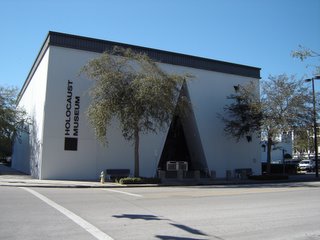 Today I visited Florida Holocaust Museum in St. Petersburg, FL. I had never been to a museum of this type, and was not sure what to expect.
Today I visited Florida Holocaust Museum in St. Petersburg, FL. I had never been to a museum of this type, and was not sure what to expect. First and foremost, the museum gives background information on violence and oppression towards Jews throughout history. This provides the pretext of the museum's main focus: the Jewish holocaust of World War II.
First and foremost, the museum gives background information on violence and oppression towards Jews throughout history. This provides the pretext of the museum's main focus: the Jewish holocaust of World War II. Surprisingly, before it gets to the heart of the matter, it pays homage to other groups oppressed at the time, like gays and Jehovah Witnesses.
Surprisingly, before it gets to the heart of the matter, it pays homage to other groups oppressed at the time, like gays and Jehovah Witnesses.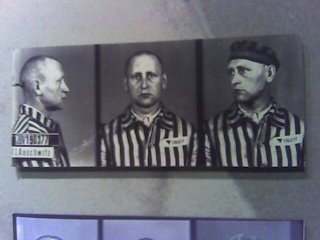 The museum if filled with photos of the dead.
The museum if filled with photos of the dead.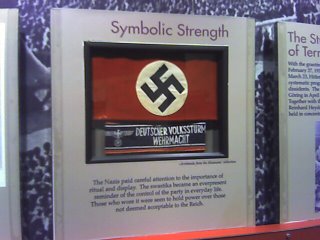 The museum does a good job of showing the process of Hitler's rise and the development of his policies. It provides historic, social, and economic reasons that allowed him to take absolute command of Germany.
The museum does a good job of showing the process of Hitler's rise and the development of his policies. It provides historic, social, and economic reasons that allowed him to take absolute command of Germany.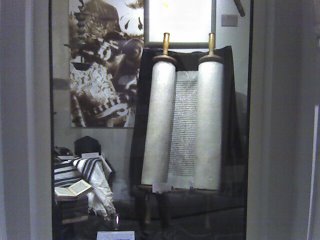 Growing up in a Jewish neighborhood in New York, I though I would learn little here. One new concept brought to my attention was pogrom called Kristallnacht, "the night of broken glass." More than 900 synagogues were destroyed during organized riots. Jews, the victims of the violence, were asked to pay for the damages later. With so many people hurt and killed, few items, like this Torah above, survived the destruction.
Growing up in a Jewish neighborhood in New York, I though I would learn little here. One new concept brought to my attention was pogrom called Kristallnacht, "the night of broken glass." More than 900 synagogues were destroyed during organized riots. Jews, the victims of the violence, were asked to pay for the damages later. With so many people hurt and killed, few items, like this Torah above, survived the destruction.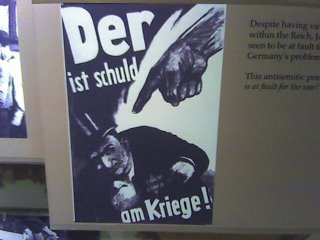 As the Nazis grew stronger, war raged on, and the area's Jewish population was marginalized, posters saying "he (the Jew) is responsible for the war" still were widely used.
As the Nazis grew stronger, war raged on, and the area's Jewish population was marginalized, posters saying "he (the Jew) is responsible for the war" still were widely used. Things began to get worse, and images we all know well became more and more of a brutal reality.
Things began to get worse, and images we all know well became more and more of a brutal reality.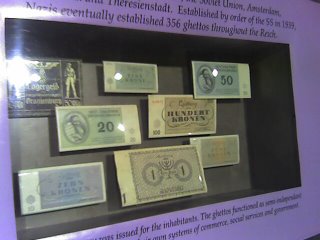 Ghettos formed had their own money, their own economic system, and their own sense of desolation.
Ghettos formed had their own money, their own economic system, and their own sense of desolation. The museum's most impactful moments came from real items, like boots worn by a concentration camp prisoner...
The museum's most impactful moments came from real items, like boots worn by a concentration camp prisoner... ...and a train car that may have taken him there. Sometimes, as many as 100 people would be jammed into a car like this.
...and a train car that may have taken him there. Sometimes, as many as 100 people would be jammed into a car like this. Beyond the museum's permanent collection was a special exhibit entitled "The Middle Passage, White Ships / Black Cargo," a collection of drawings by Tom Feelings. These chilling depictions focused not on the Jewish Holocaust, but the forced migration of African slaves. The photo quality does not do them justice here.
Beyond the museum's permanent collection was a special exhibit entitled "The Middle Passage, White Ships / Black Cargo," a collection of drawings by Tom Feelings. These chilling depictions focused not on the Jewish Holocaust, but the forced migration of African slaves. The photo quality does not do them justice here.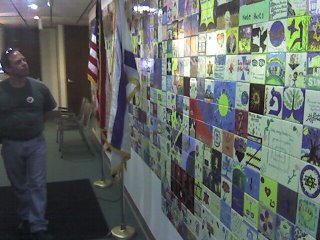 Children of all ages contributed to a collage of tiles with hopes of peace on Earth and co-habitation.
Children of all ages contributed to a collage of tiles with hopes of peace on Earth and co-habitation. I was particularly fond of this one.
I was particularly fond of this one.It's a tough place to visit, but certainly not something that should be ignored, so that we never forget mankind at its worst.

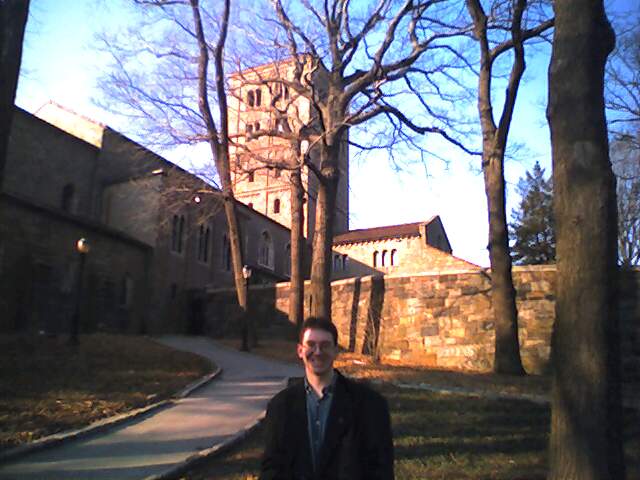

0 Comments:
Post a Comment
|<< Home